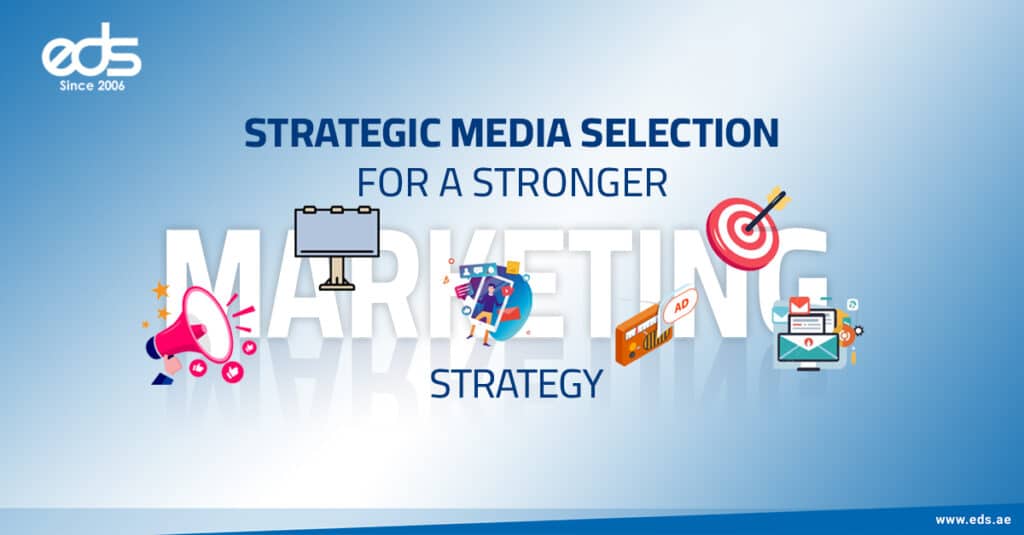Choosing the appropriate media channel is essential to developing a successful marketing plan. It might be confusing to choose the channels that best fit your target audience and business goals among the plethora of possibilities accessible today.
This thorough guide will assist you in navigating the process and helping you make decisions that will improve your marketing efforts.
1. Understand Your Target Audience
Understanding your target audience in great detail is the first step in selecting the appropriate media channels. Learn about their activities, hobbies, demographics, and media consumption patterns. Think about elements like:
- Age: Audiences of different ages are drawn to diverse media.
- Location: The choice of channel is influenced by local, regional, or worldwide reach.
- Interests: Make sure your media channels reflect what your viewers are interested in.
- Conduct: In what way does your target audience prefer to receive content?
The media platforms that will most successfully reach and engage your target market can be determined by developing thorough audience profiles.
2. Define Your Marketing Goals
Make your marketing goals clear in order to identify the media outlets that will best help you achieve them. Typical marketing objectives consist of:
- Brand Awareness: Visibility can be increased through media outlets including radio, television, and social media.
- Lead generation: Make use of online resources including content marketing, LinkedIn, and Google Ads.
- Sales Conversion: Pay attention to channels like email marketing and retargeted ads that prompt instant action.
- Customer Retention: Make use of platforms like loyalty programs and newsletters that encourage continuous interaction.
Making media selections in line with your objectives guarantees a targeted and successful approach.
3. Evaluate Media Channels
Different media channels offer various benefits and drawbacks. Here’s a brief overview of popular options:
- Digital Media: Includes social media, search engines, and websites. Offers precise targeting, measurable results, and cost flexibility. Ideal for engaging younger audiences and driving conversions.
- Traditional Media: Includes television, radio, and print. Provides broad reach and credibility but can be costly and less targeted. Effective for building brand awareness and reaching older demographics.
- Outdoor Media: Includes billboards, transit ads, and posters. Great for local visibility and brand recognition but has limited interaction and targeting.
- Email Marketing: Allows for personalized communication and direct engagement. Excellent for lead nurturing and customer retention.
- Events and Sponsorships: Offers opportunities for direct interaction and brand association. Useful for networking and enhancing brand image.
Assess each channel’s reach, engagement potential, cost, and alignment with your audience to make an informed decision.
4. Consider Budget and Resources
Your budget will significantly impact your media channel selection. Different channels come with varying costs, from production expenses to placement fees. Consider:
- Cost Per Acquisition (CPA): Evaluate how much you’re willing to spend to acquire a customer through each channel.
- Return on Investment (ROI): Measure the potential ROI of each channel based on past performance and industry benchmarks.
- Resource Allocation: Ensure you have the necessary resources and expertise to manage and optimize your chosen channels.
Balancing cost and effectiveness are key to maximizing your marketing budget.
5. Test and Optimize
Once you’ve selected your media channels, it’s essential to test and optimize your campaigns. Implement a pilot campaign to gauge the performance of each channel and adjust your strategy based on the results. Key steps include:
- A/B Testing: Experiment with different messages, creatives, and targeting strategies to identify what works best.
- Performance Metrics: Track key performance indicators (KPIs) such as engagement, conversions, and ROI.
- Feedback Loop: Collect feedback from your audience and adjust your approach accordingly.
Continuous optimization ensures that your media strategy remains effective and responsive to changing market conditions.
6. Integrate and Align
Ensure that your chosen media channels work together cohesively. An integrated approach helps reinforce your message and maximize impact. For example:
- Cross-Promotion: Use social media to drive traffic to your website or email campaigns.
- Consistent Branding: Maintain consistent messaging and visuals across all channels to build a unified brand image.
- Multi-Channel Strategy: Combine various channels to reach your audience through multiple touchpoints.
An aligned and integrated media strategy enhances overall effectiveness and strengthens your marketing efforts.
Choosing the right media channels requires a strategic approach that aligns with your audience, goals, and resources. By understanding your target market, evaluating channel options, managing your budget, and continuously optimizing your strategy, you can create a robust media plan that drives successful marketing outcomes.
Reach out to us for a tailored media strategy that will elevate your marketing efforts and drive exceptional results:
Call: +97145193444 | [email protected] | eds.ae

